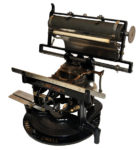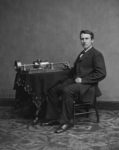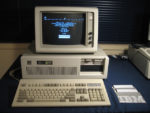The first successful transatlantic telegraph line goes into operation, Edison invents a new way to listen to music and IBM dedicates a 51-foot calculator… It all happened This Week in Tech History.
1858 – The transatlantic cable was finished and Britain’s Queen Victoria sent a telegram to U.S. President Buchanan, congratulating the President on an undertaking that she hoped would serve as an additional bond of Union between the United States and England. The messages were hard to decipher and Queen Victoria’s message of 98 words took sixteen hours to send across the Atlantic.
1876 – Thomas Edison patented the mimeograph machine. He described it as a method of preparing autographic stencils for printing Many of us remember mimeograph copies from school. Those nice-smelling papers with the purple ink on them.
Old Tom was a busy man because one year later in 1877 – he finished figuring out his first phonograph. Edison handed the model of his invention to John Kreusi with instructions on how to build it. Kreusi, a confident man, bet the inventor $2 and said that there was no way that the machine would ever work. Less than 30 hours later, they had a machine that worked on the first try.
1944 – IBM dedicated the first program-controlled calculator, the Automatic Sequence Controlled Calculator – better known as the Harvard Mark I. This wasn’t the kind of calculator you could throw in you backpack. This calculator used 765,000 electromechanical components and hundreds of miles of wire. It was 51 feet long, 8 feet high and 2 feet deep.
1981 – IBM introduced the personal computer with their 5150 model. The IBM PC ran on the Intel 8088 microprocessor. It had 16 kilobytes of memory, no built-in clock or video capability — it was available however, with an optional color monitor. Prices started at around $1,500. The IBM PC was a smashing success and IBM quickly became the #1 microcomputer company, dropping Apple to #2.






